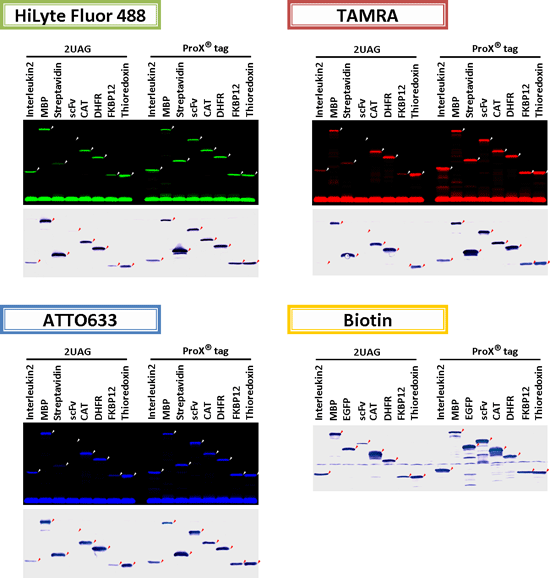  
|
|
|
   |
In-gel detection of expressed pin-point fluorescent- and biotin- labeled
proteins
The pin-point fluorescence labeled protein is possible to be
resolved by running a sample on an SDS-PAGE and then visualized by placing
the gel on a laser-based fluorescence scanning device. Even western blotting
analysis is detectable to a sample by antibody depends on tag peptide,
etc (Figure. 1). 0.25~ 1 µL of translational reaction mixture is needed for the detection.
* A lot of unused labeled amino acids at incorporation are contained into
translational reaction mixture, the unused labeled amino acids are confirmed
to electrophoresis top.
|
 |
Figure 1 : In-gel detection
|
2UAG : A UAG codon is inserted after at N-terminus.
ProX tag* : A ProX tag is added N-terminus.
Applied volume: 0.25 µLof translational reaction mix
Detection by fluorescent laser scanner(Top)
HiLyteFluor488 Ex : 488nm / Em : 520 nm
TAMRA Ex
: 532nm / Em : 580 nm
ATTO633 Ex
: 635nm / Em : 670 nm
Western blotting(Bottom) : anti-His antibody
(the biotin labeled protein used for an anti-biotin antibody) |
|
* ProX tag is the original peptide tag that ProteinExpress has developed
to achieve efficient labeling of proteins.
|
[Questions about Products]
>>Online question
 Back to HOME Back to HOME
|
 Back to "Pin-point Protein Labeling" page Back to "Pin-point Protein Labeling" page
|

